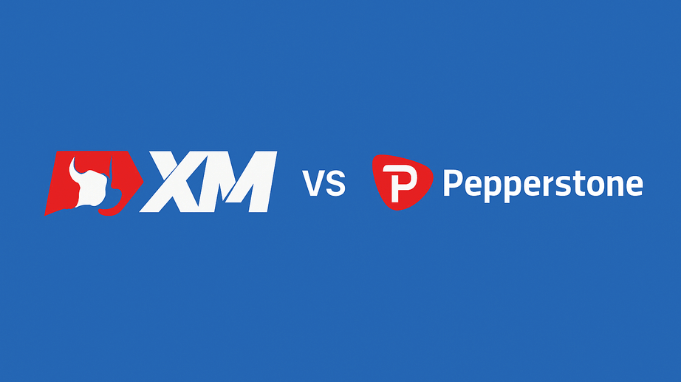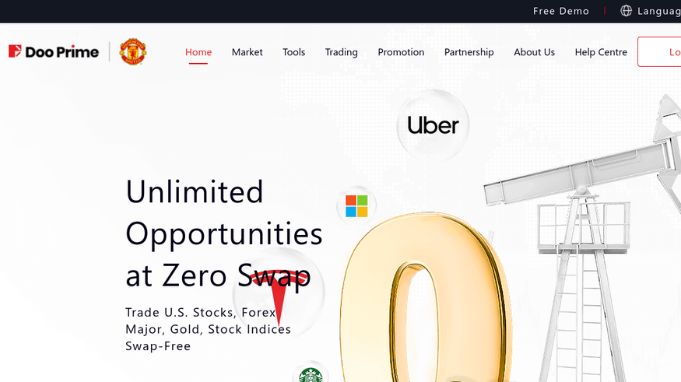When it comes to online trading, choosing the right broker can make a huge difference. Whether you are a beginner or a professional trader, factors like trading platforms, spreads, commissions, regulation, and customer support are crucial in your decision. Two well-known brokers that often come up in discussions are XM and Pepperstone.
In this detailed comparison of XM vs Pepperstone, we will break down everything you need to know about these two brokers. By the end of this article, you will be able to choose the broker that best matches your trading needs.
XM vs Pepperstone: Quick Comparison Table
| Feature | XM | Pepperstone |
| Founded | 2009 | 2010 |
| Regulation | ASIC, CySEC, FSC, DFSA | ASIC, FCA, DFSA, BaFin, CMA |
| Minimum Deposit | $5 | $0 |
| Spreads (EUR/USD) | From 0.6 pips (Standard) | From 0.0 pips (Razor) |
| Commission on Trades | Zero (Standard), $3.5/lot (Raw) | $3.5 per side (Razor) |
| Leverage | Up to 1:1000 (depending on region) | Up to 1:500 (depending on region) |
| Trading Platforms | MT4, MT5, XM App | MT4, MT5, cTrader |
| Account Types | Micro, Standard, Ultra Low, Shares | Standard, Razor, Swap-Free |
| Deposit/Withdrawal Fees | None | None |
| Customer Support | 24/5 Live Chat, Email | 24/5 Live Chat, Email |
| Best For | Beginners, low minimum deposit | Scalpers, advanced traders |
🏛️ Regulation & Safety: Is Your Money Safe?
Both XM and Pepperstone are regulated by top-tier authorities, making them safe and reliable.
- XM is regulated by ASIC (Australia), CySEC (Cyprus), FSC (Belize), and DFSA (Dubai).
- Pepperstone is licensed by ASIC, FCA (UK), DFSA, BaFin (Germany), and CMA (Kenya).
Verdict: Both brokers are highly regulated, but Pepperstone has a slight edge due to its broader global regulatory presence.
💰 Minimum Deposit and Account Types
- XM offers a very low minimum deposit of just $5, ideal for beginners.
- Pepperstone has no minimum deposit, which is great, but the recommended starting balance is around $200 for proper margin management.
Account Types:
- XM: Micro, Standard, Ultra Low, and Shares Accounts.
- Pepperstone: Razor (for tight spreads), Standard, and Islamic Swap-Free.
Verdict: XM is more beginner-friendly with its lower deposit requirement.
⚙️ Trading Platforms
Both brokers offer the popular MetaTrader 4 (MT4) and MetaTrader 5 (MT5). However, Pepperstone also supports cTrader, a favorite among professional traders and scalpers due to its faster execution and depth of market features.
- XM: MT4, MT5, and its own XM Mobile App.
- Pepperstone: MT4, MT5, cTrader, and TradingView integration.
Verdict: Pepperstone wins for platform variety and advanced tools.
📉 Spreads and Commissions
This is where things get competitive:
- XM Standard Account: Spreads from 0.6 pips, no commission.
- XM Ultra-Low Account: Spreads from 0.6 pips, lower than average.
- Pepperstone Razor Account: Spreads from 0.0 pips + $3.5 per side.
If you’re a scalper or day trader, Pepperstone’s Razor account is ideal due to the lower overall cost.
Verdict: Pepperstone offers tighter spreads for high-frequency traders, but XM is better for casual traders.
📲 Mobile Trading
- XM has its own mobile app plus MT4/MT5 apps.
- Pepperstone offers mobile versions of MT4, MT5, and cTrader.
Both apps are fast, secure, and support full trade functionality.
Verdict: Tie – both brokers provide excellent mobile trading experience.
💳 Deposit and Withdrawal Options
Both brokers support:
- Bank transfers
- Credit/debit cards
- E-wallets (Skrill, Neteller, etc.)
- Local payment methods
There are no deposit or withdrawal fees with either broker.
Verdict: Both are efficient and transparent with funding and withdrawals.
🛠️ Tools & Features
XM Tools:
- Economic calendar
- Free VPS
- Trading signals
- Daily market analysis
- Webinars and education
Pepperstone Tools:
- Autochartist
- Smart Trader Tools (MT4 plugin)
- Trading Central
- VPS Hosting
- Social trading (via DupliTrade and Myfxbook)
Verdict: Pepperstone provides more advanced tools, while XM focuses on education.
🧑🏫 Education & Support
XM Education:
- Free webinars
- Forex basics tutorials
- Video library
- Live trading sessions
Pepperstone Education:
- Webinars
- Blog articles
- Trading guides
Support Availability:
Both offer 24/5 live chat and email support, with responsive customer service.
Verdict: XM is better for beginners who want to learn trading from scratch.
🌍 Countries Accepted
- XM accepts clients from many countries but excludes the USA, Canada, and a few others.
- Pepperstone also has restrictions for certain regions but is known for strong presence in Australia, Europe, Kenya, and the Middle East.
Verdict: Check availability based on your country. Both brokers have global reach.
🎯 Who Should Choose XM?
✅ You’re new to trading
✅ You want to start with a small deposit
✅ You prefer educational resources and webinars
✅ You trade less frequently and want zero commissions
🎯 Who Should Choose Pepperstone?
✅ You are a scalper or day trader
✅ You prefer ultra-tight spreads
✅ You use cTrader or advanced tools
✅ You trade frequently and need fast execution
🧠 Final Verdict: XM vs Pepperstone – Who Wins?
Both brokers are excellent and regulated, but your choice depends on your trading goals.
- Choose XM if you’re just getting started and want educational resources and a low-cost entry.
- Choose Pepperstone if you’re an experienced trader looking for tight spreads and advanced platforms.
There’s no one-size-fits-all answer, but now you have the information to choose the best broker for your style.
Conclusion
In this XM vs Pepperstone comparison, we explored every major difference to help you make an informed choice. From spreads and commissions to platforms and educational support, both brokers have their strengths.
Whether you go with XM for simplicity or Pepperstone for performance, the key is to trade responsibly and stay informed.
If you still can’t decide, why not try demo accounts on both brokers and see which one suits your style?
Disclaimer: Trading forex and CFDs involves significant risk, and you should only trade with money you can afford to lose. This article is for informational purposes only and does not constitute financial advice.



